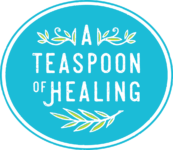Fat – so vital, yet so misunderstood
How many times have we heard the phrase “if you eat fat, you’ll get fat?” Unfortunately, this misconception has contributed to the obesity epidemic in the United States.
Fat is the most misunderstood macronutrient. Coming in at nine calories per gram, fat molecules provide a great amount of slow-burning energy for our bodies. Fat, particularly saturated fats and monounsaturated fats, are vital for many of our body’s structures and functions: cell membranes, the myelin sheath around neurons and to absorb fat-soluble vitamins and minerals.
Fat, however, has been maligned in American society for over 70 years. We’ve been told by the dietary powers-that-be that fat is something that causes heart disease, high cholesterol. clogged arteries and obesity. This is known as the lipid hypothesis. Saturated fat, in particular, has become an ingredient that we’ve been told specifically to shun. Well-respected organizations like the American Heart Association still advise the American public to avoid consuming saturated fats, based on tenuous evidence in the famous Framingham Heart Study, an epidemiological study that began in 1948, right after World War II. The results of this study, portions of which have recently been called into question by scientists and physicians alike, provided the basis for rejecting saturated fats, citing their consumption as a direct cause of coronary heart disease.
Since the 1950’s, the American public has had a love affair with all things “low fat.” Low-fat varieties of popular products hit supermarket shelves and people bought them, believing they would lose weight and avoid heart disease. Obesity rates, however, began to skyrocket, and the rate of heart disease showed no signs of abating.
Why was this happening? Shouldn’t low-fat foods cause less obesity, and less heart attacks? Unfortunately not, because food manufacturers had to come up with a solution to the bland-tasting food products after saturated fat was removed. To make these items palatable, they added sugar. Lots of it. In addition, people were advised to cook and bake with margarine and vegetable shortening, rather than traditional butter, lard, and coconut oil.
Also, many people turned to polyunsaturated oils to lower their heart attack risk, but recent studies have shown that replacing butter with canola, safflower and other polyunsaturates does not decrease heart attack risk, and may increase inflammation.
Margarine and shortening were loaded with polyunsaturated fats, and trans fats. To turn polyunsaturated fats, which are liquid at room temperature, into a solid form, food manufacturers created partially hydrogenated polyunsaturated oils. These trans fats began to be added into other products, such as cookies, donuts, pastries and French fries. Trans fats increase the amount of LDL cholesterol, aka the “bad cholesterol” and decrease the amount of the beneficial HDL cholesterol in the blood. They also contribute to inflammation, insulin resistance and heart disease. They are not safe to consume. Thankfully, most of these trans fats have been eliminated from the food supply.
Even without trans fats, low fat diets are still contributing to the growing obesity crisis in this country. The body needs fats for energy. Cutting them out or drastically reducing them from our diet, leads to low energy. When people feel low on energy, they reach for quick-burning energy sources: carbohydrates and refined sugars. The elimination of fats from the American diet led to an overconsumption of carbohydrates. These pack a quick burst of energy, but without the slow-burning fats in the diet, more and more carbohydrates must be consumed to sustain energy, otherwise one quickly crashes.
Carbohydrates are converted into glucose in the bloodstream, signaling the beta cells of the pancreas to produce more insulin, so insulin-dependent cells in our body can use the glucose for energy. The amount of carbohydrates we consume, however, is well above the amount needed to sustain our daily activities! So, the extra glucose is stored as glycogen in the liver, as well as it being stored in our adipose tissue cells. This leads to weight gain, as more adipose tissue equals more body fat! Over time, our insulin production goes through the roof, and eventually, our cells become resistant to insulin. This leads to metabolic syndrome and Type II diabetes.
As cells become more and more resistant to insulin, they aren’t able to take up the excess glucose, so again, more glucose is stored in adipose tissue cells for later use. This leads to even more weight gain! Eventually, the beta cells in the pancreas can’t keep up, so they make less and less insulin, leading to more adipose tissue glycogen stores, and also, inflammation and a host of other conditions.
What can be done? While carbohydrates are not “bad,” we simply don’t need as much as we are consuming! By adding more healthy fats to our diet again, we will have slow-burning energy that will sustain us, and less glucose will need to be stored in adipose tissue for future use. There have been dietary trends in recent years toward eating more and more healthy fats, and cutting down on refined carbohydrates. In addition, recent studies have shown the harmful effects of over-consumption of carbohydrates, and the importance of fats for our health. Hopefully, the health care industry and food manufacturers will listen to this new research and take heed!
I definitely enjoy cooking with saturated fats, and after adding healthy fats back into my diet, I find that I have much more energy, my skin looks better and I have lost weight.
Sources:
The Fallacies of the Lipid Hypothesis
The Impact of dietary fat on serum cholesterol and coronary heart disease, National Medical Journal of India
Plasma lipids and cerebral small vessel disease, multiple authors, Neurology, November 2014.
Visceral adiposity and metabolic syndrome after very high–fat and low-fat isocaloric diets: a randomized controlled trial, The American Journal of Clinical Nutrition, multiple authors, 2016.




